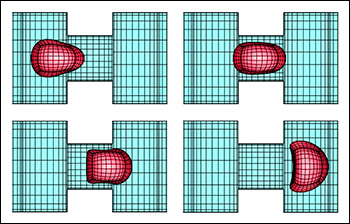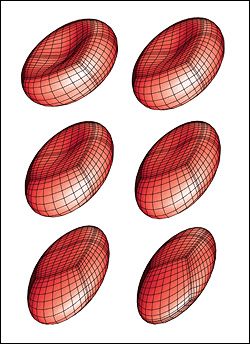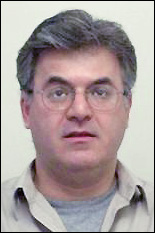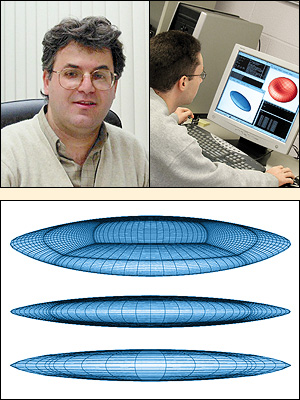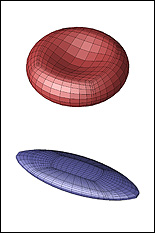News Story
Boger, Kreeger and Saez Win 2013 Undergraduate Research Awards
The Department of Chemical and Biomolecular Engineering (ChBE) extends its congratulations to Shir Boger, Erin K. Kreeger, and Camila Saez, who received the department’s 2013 Undergraduate Research Awards. The annual honor, presented each spring to students nominated for work performed in the previous academic year, was created to highlight the accomplishments of ChBE's strong and well-established community of undergraduate research assistants.
Boger, a ChBE senior who tied for first place, studied erythrocyte (red blood cell) flow dynamics in Associate Professor Panos Dimitrakopoulos’ BioFluid Dynamics Laboratory. Her project involved the computational investigation of red blood cell dynamics in different “four-roll” mill flows. These linear flows exhibit different strength of extensional and rotational components, and filling a range from simple shear flow to pure extensional flow. Her results provide physical insight in the fundamental flow dynamics of erythrocytes, and can be used to explain the deformational behavior of these cells in the microcirculation, especially in micro-vessel bifurcations and junctions in local flows.
Kreeger, a bioengineering major who tied with Boger for first place, is a junior and a Successful Engineering Education and Development Support (SEEDS) Fellow who worked in Assistant Professor Ganesh Sriram’s Metabolic Engineering Laboratory. Her research project, conducted in collaboration with ChBE graduate student Andrew Quinn, focused on the investigation of metabolic pathways in algae to determine how they might be engineered to produce advanced biofuels, chemicals, or their precursors. She investigated how the carbon routing in the diatom Phaeodactylum tricornutum could be manipulated in order to improve the alga’s synthesis of the hydrocarbon isoprene, a reduced-carbon compound that is a precursor to biofuels, including true diesel.
Saez, a senior who received the second place award, worked in Professor Srinivasa Raghavan’s Complex Fluids and Nanomaterials Group, where she studied the agglutination (clumping or clustering) of chitosan microparticles. In collaboration with ChBE graduate student Chanda Arya, she explored a way to induce agglutination among the microparticles with the addition of a polymer. The process was tailored to be very specific, only occurring if the polymer’s hydrophobic units were recognized by supramolecules on the surface of the chitosan microparticles. This is a concept that mimics the clotting of blood platelets in the presence of a protein called fibrin, and is being explored as a means of capturing tumor cells as they circulate through the bloodstream.
Published April 7, 2014


